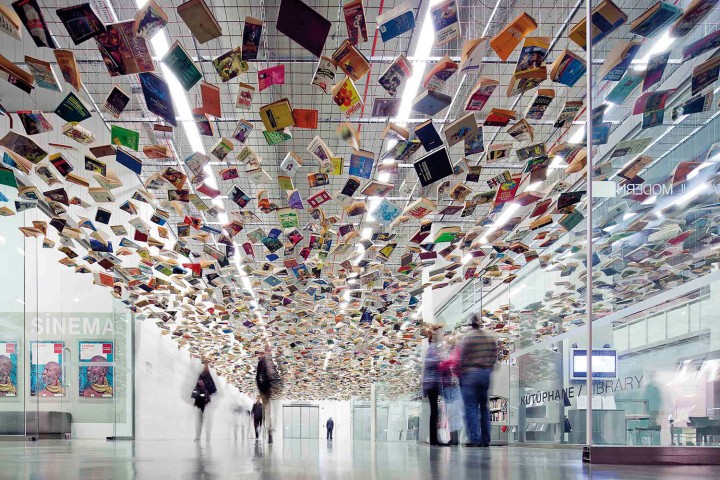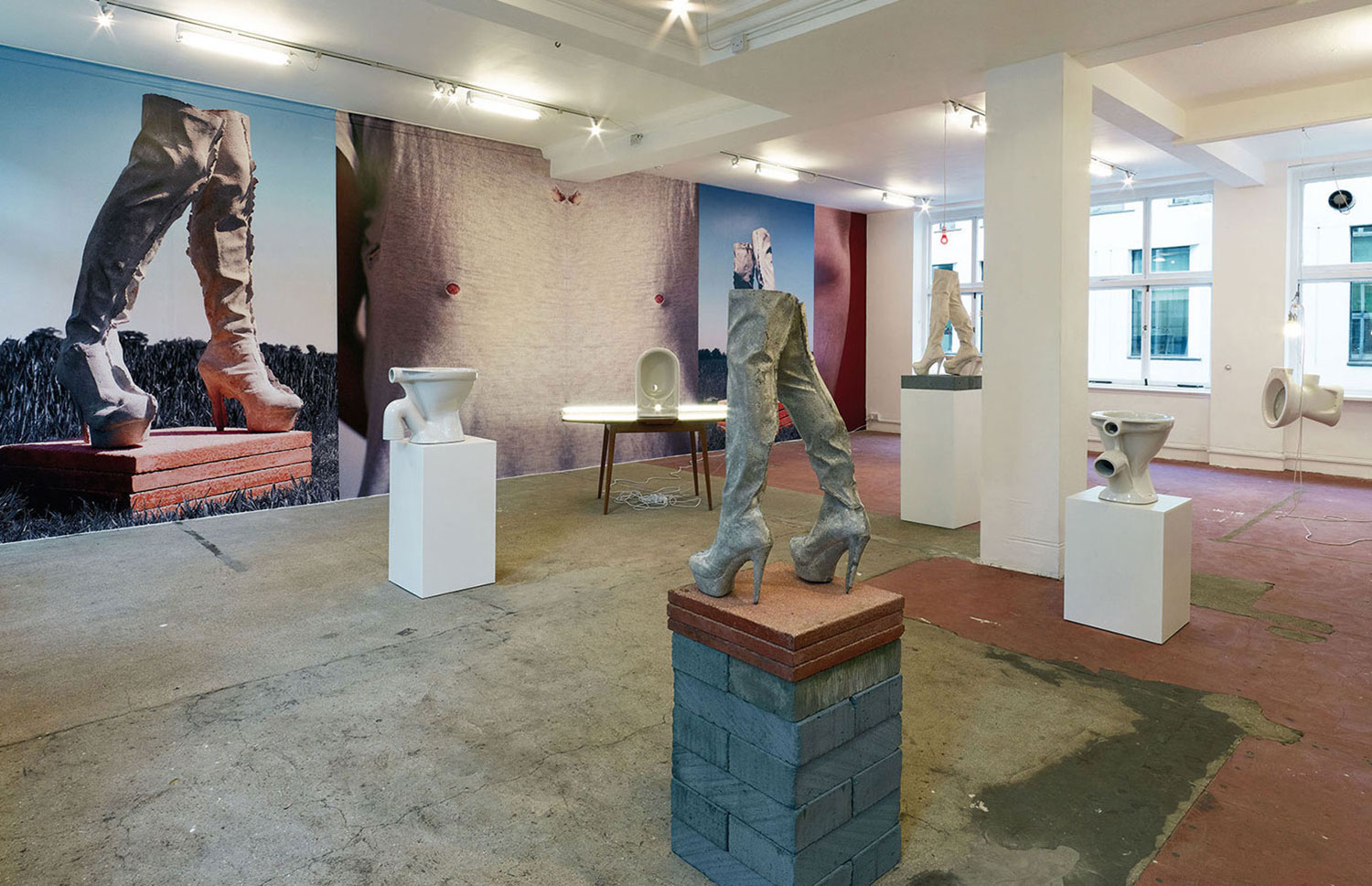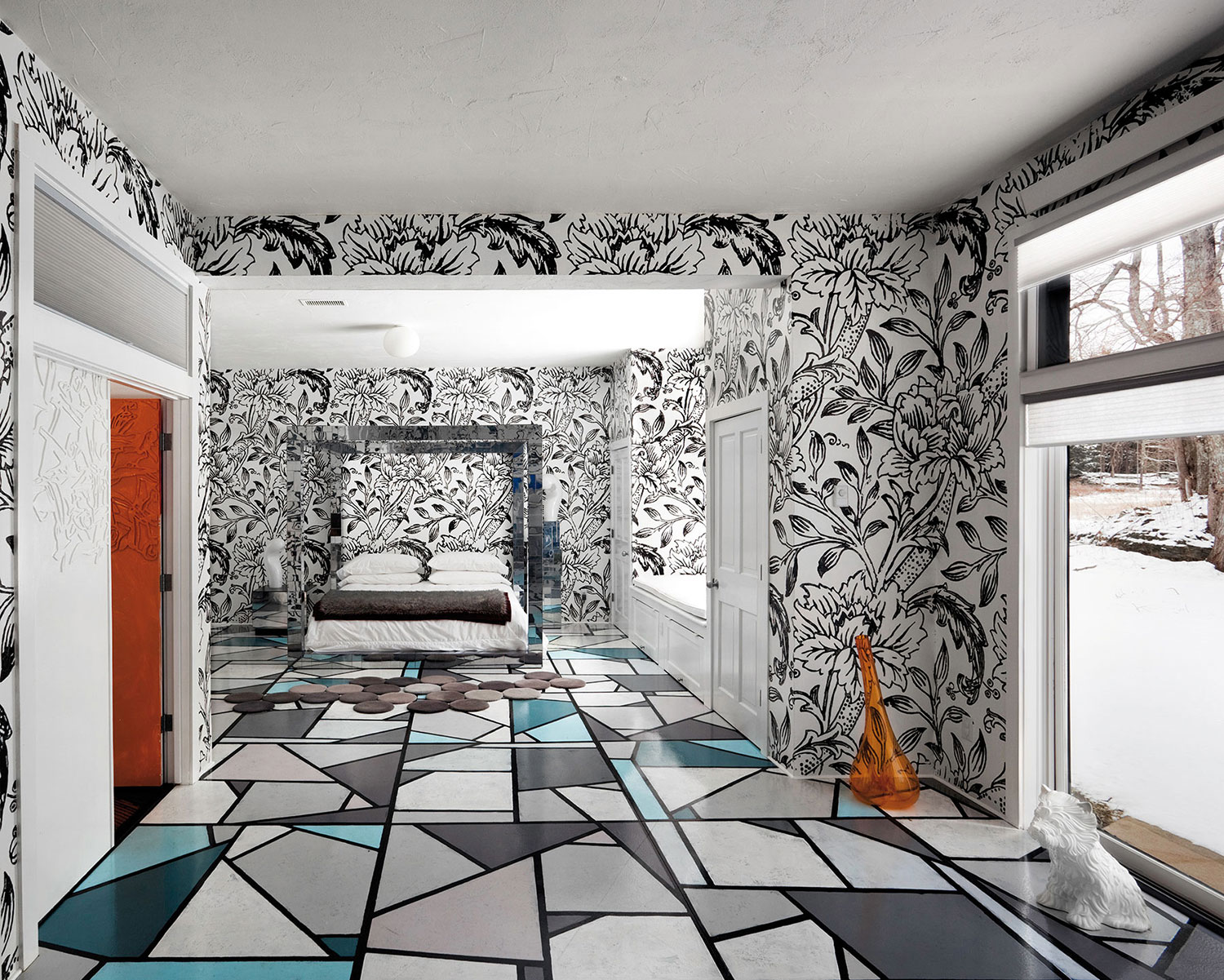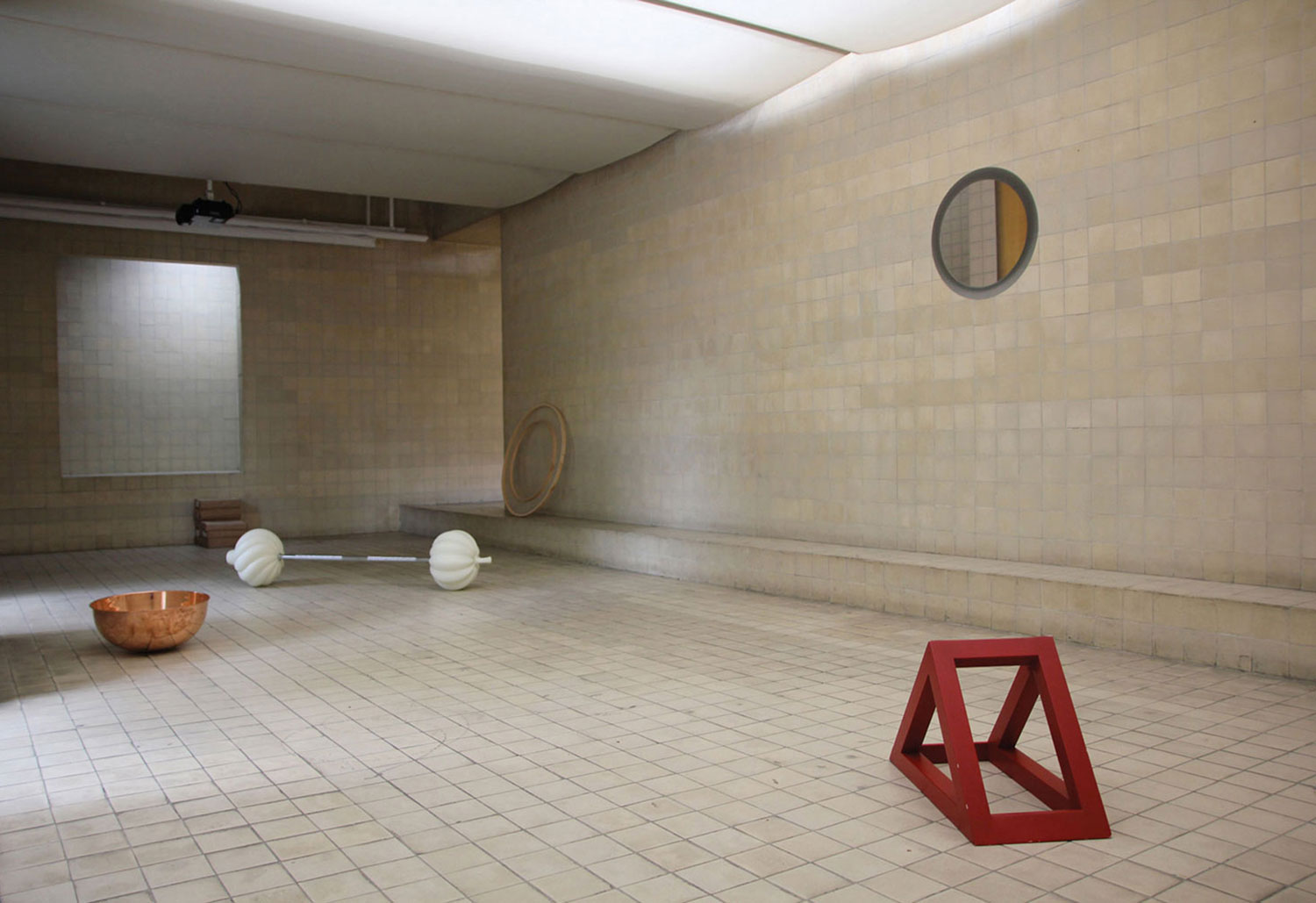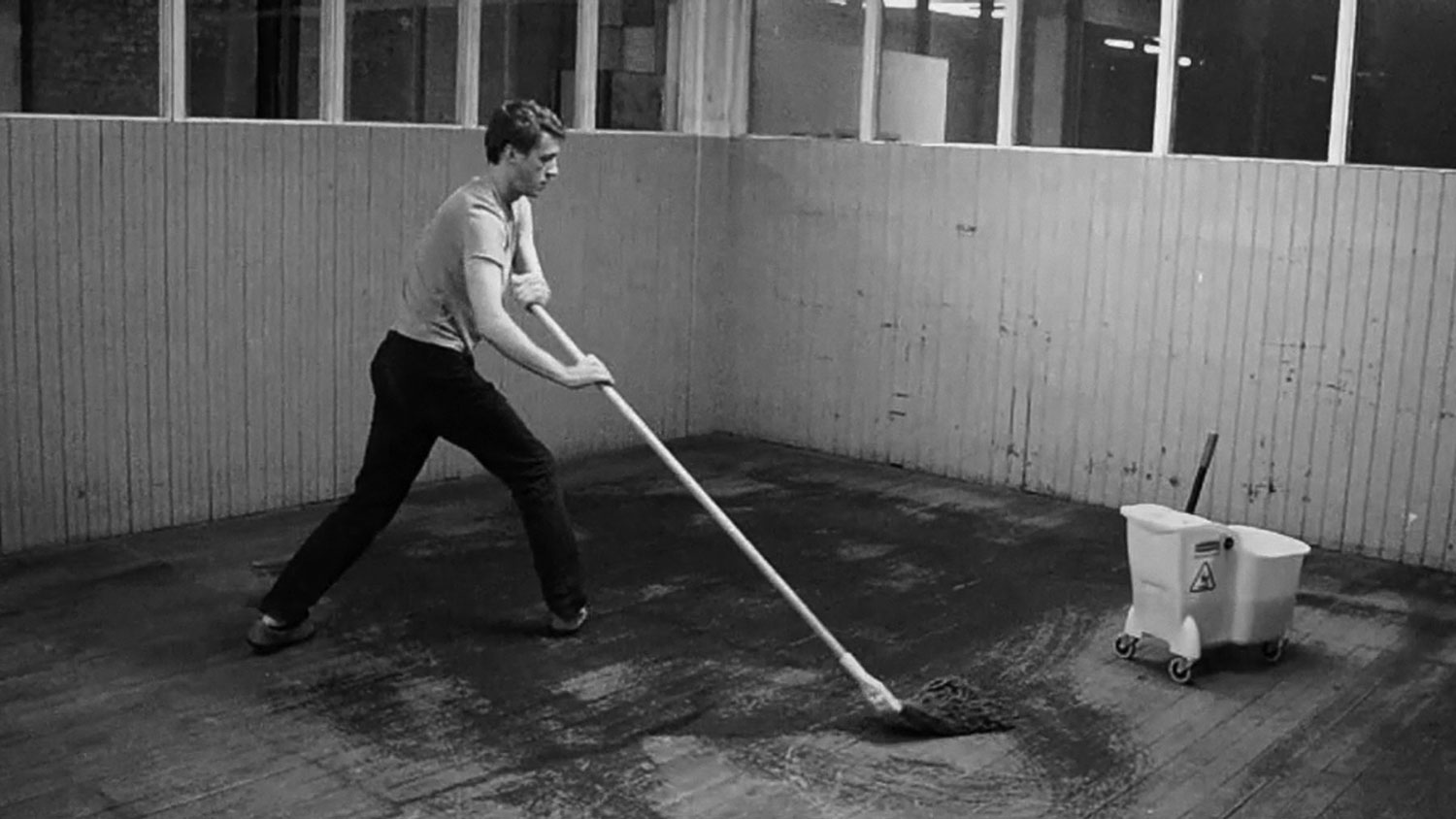
Flash Art invites a selection of some of the most dynamic Turkish galleries, institutions, curators, collectors and artists to give insight to the contemporary art scene in Turkey — a country whose position as a gateway between Europe and Asia makes it one of the most interesting and lively.
Galleries
1) The Turkish art scene has gained the reputation of being very vibrant and proactive. What are the driving forces behind this momentum (galleries, institutions, curators, etc.)?
2) Are local collectors more interested in Turkish or international artists?
Haldun Dostoğlu
Director, Galeri Nev, Istanbul
1) There are many factors. As an outcome of the elections that took place after the 1980 coup d’état, the “Anavatan” party privatized the Turkish economy in an accelerated manner. In this economic environment, entrepreneurship started to gain support, and the art scene also benefited; after 1984, many art galleries opened. Then the Istanbul Biennial both educated the local audience and attracted international attention. The number of young people educated in art dramatically increased. Private museums (Istanbul Modern, Sakıp Sabancı Museum, etc.) expanded the local audience for contemporary art and also created international visibility. The quality of art production in the country has improved considerably, and contemporary Turkish artworks have started to be exhibited internationally. In the 2000s, young gallerists have worked hard at partaking in the international circulation of contemporary art. Non-profit institutions have also contributed to the development of audience taste.
2) Local collectors have redirected their interest from Turkish artists to international ones.
Emre Kurttepeli
Founder, C24, New York
1) The Turkish contemporary art scene was put on the map by the Istanbul Biennial. Prior to that, the contemporary art scene in Turkey was really underground, local and a bit sleepy. Several forces came together at once over the last decade. Contemporary artists, like Ali Kazma, who will represent Turkey in the 2013 Venice Biennale, are moving back to Istanbul from abroad. Young artists have started taking more risks and are engaging their local environment and history, rather than imitating Western art. Numerous non-profit and profit institutions have been launched in rapid succession, and the number of art professionals working in these institutions has exponentially grown in the last ten years. Meanwhile, the fast growth of the Turkish economy coupled with a young population has created a new class of youthful art lovers.
2) The local artists are favored, but I believe that is in part because of the international success they are experiencing.
Yesim Turanli
Director, Pi Artworks, Istanbul
1) My belief is that an emerging art market needs all of its components to be active, collaborating and functioning together. I have had Pi Artworks for the past 15 years, and this collaboration has been improving with a very fast pace these last years. Istanbul Modern, Arter and SALT are the main institutional driving forces for contemporary art. The success of the Istanbul Biennial is indisputable. I believe that galleries play a crucial role in keeping the market up to the pace both internationally and locally.
2) Turkish local collectors start with local artists and move on to blue chip and emerging international names. But I do find Turkish collectors less conservative compared to many from different parts of the world. They like adventure, and this makes them more open to new artists. I started introducing international artists to my artist mix only three years ago, and the experience has been very fulfilling so far.
Daryo Beskinazi
Founder and owner, X-ist, Istanbul
1) I believe this momentum is driven predominantly by financial motives. Turks are and have always been interested in new and fruitful investments, and currently art brings more money than any classical instrument on which one can invest. However, this situation also helps new collectors to emerge gradually, which will eventually bring the general art scene of the country into a “conscious collectors’ market” more than a “financially driven market;” but that’ll surely take some time.
2) The big buyers of the market have started to go for super-international names lately (Gursky, Cragg and Opie are accepted musts for an introduction to “prestige”). However, the majority stays local. It’s like a small-scale simulation of the Chinese market of 15 to 20 years ago, but we don’t have the serious back-up of New York and/or London guys yet. The Chinese market was 100% Chinese before it became international. As for Turkey, the situation seems less supportive for local artists. We’ll see what happens in ten years, but I have a lot of hope.
Levend Binat
Director, C.A.M., Istanbul
1) The arts in Turkey have attracted capital to the big cities — like Istanbul — faster than before. Unfortunately, art has become an indicator of status, and art became a subject for the media as a result of the involvement of auction companies such as Sotheby’s and Christie’s. It seems this will go on for a while. I hope we will begin to talk about a true art market as the buyers become more aware. Time is the most powerful expert on this subject.
2) Turkish collectors primarily collect Turkish artists. Except for a few collectors, most need more time to follow the art world and accumulate experience.
Sabiha Kurtulmuş
Owner, Merkur, Istanbul
1) There has been a serious dynamism in Turkish art — particularly in contemporary art — over the last five years. The rising economy has positively reflected on art: private collections, exhibitions, the effect of the Istanbul Biennial, the opening of new galleries, participation in international fairs and auctions — all are the causes of this increasing vitality.
2) For a long time, Turkish collectors invested only in Turkish art. Through the effect of international fairs, and Sotheby’s and Christie’s in particular, Turkish collectors have concentrated on international artists. Substantial artists on the international scene have started to have exhibitions in Turkish galleries. Collectors have been seriously following the fairs and exhibitions. Now, they have made a place for foreign artists in their collections.
Institutions
1) How did the international success of the Istanbul Biennial affect your institution?
2) Are Turkish art institutions and museums supported by public or private means?
Moiz Zilberman
Director, cda Projects, Istanbul
1) The success of the Istanbul Biennial naturally affected all the institutions greatly with its synergy. With two galleries and one multipurpose art space located in the Misir Apartments Building in the Beyoğlu District, where many of the art events take place, we welcome more enthusiastic visitors from the international art scene during the Biennial. These are the times for us to establish possible future collaborations internationally as well as to strengthen the existing ones.
2) Most of the institutions/museums are funded privately. There are very few institutions/museums for contemporary art funded publicly, and these unfortunately are not greatly contributing to the art scene in general.
Levent Çalıkoğlu
Chief Curator, Istanbul Museum of Modern Art, Istanbul
1) Since 1987 the Istanbul Biennial has acted as a dynamo in Istanbul’s cultural and artistic transformation. Istanbul Modern is a neighbor of the “Antrepo” warehouses, the main venue of the Biennial, and is situated in one of these warehouses. Curators, art historians, journalists, critics and artists who visit the Istanbul Biennial naturally also visit Istanbul Modern. These visitors are an important opportunity for new collaborations, cultural exchange and future projects. Certainly when we organize our exhibitions we also take into consideration what shows we should hold in parallel with the Biennial.
2) Since the day it was founded, Istanbul Modern has entirely depended on the means and sponsorship of the private sector. It is an institution that finds sponsors for each activity and exhibition and has accomplished a successful transformation in this respect in Turkey’s artistic and cultural sphere. Istanbul Modern has also developed collaborations supported by local and central governments.
Nancy Atakan
Artist and Director, 5533 (non-profit), Istanbul
1) In 2007, for the 10th International Istanbul Biennial the curator, Hou Hanru, selected İMÇ, a 1960s modern shopping center (where 5533 is now located), as one of the main venues. For this biennial I asked the international curator, Adnan Yildiz, if he would like to do a project in this space. He organized a project entitled “Big Family Business” as a hotspot for curators and visitors to meet and interact. The success of this event gave Volkan Aslan and I the idea that the non-profit off-space we had been dreaming about could be established here, a location on the periphery of the Istanbul art scene. As parallel events, we have continued to organize projects in 5533 during the subsequent biennials.
2) All contemporary art institutions and museums are privately supported.
Didem Ozbek
Director, PiST/// (non-profit), Istanbul
1) When we started PiST/// on May 2006, we stated the need for a dynamic, local art scene, especially during the 22-month period when there was no biennial taking place in Istanbul. For sure the Biennial’s success allowed art professionals from Istanbul to introduce themselves abroad, made us attractive as members of an art scene that maintains a place in the international calendar of events. I am aware of its importance, and none should skip it, but I am happy to experience periods of competition and productivity in Istanbul that does not target the biennial only. Now the city’s local art scene is stronger, its art market is getting established. When we started PiST///, we knew that the rest of the iceberg was important to feel the effect at its tip. The biennial will always be important, but I am proud to see that there is much more going on these days when it is not around.
2) All art institutions, spaces and museums are private initiatives established by individuals, artists, collectors, private banks, etc. Having no public support strengthens the freedom of contemporary art practice in Istanbul/Turkey. As an art project, it would be interesting for me in the near future to subvert the corner shop of PiST/// into a “private bank” branch.
Curators
1) Are there good opportunities for local critics and curators? Do you feel the need to travel abroad?
2) How is knowledge of contemporary art generated? Is it through travel, schools, local activities, galleries or art magazines?
Emre Baykal
Exhibition Director and Curator, Arter, Istanbul
1) The last couple of years Istanbul has become a real magnet for artists and art professionals from all around the world. The city itself and its vibrant energy has always been quite inspiring for artistic production. Yet, until recently, the scene lacked institutions and spaces that would support the translation of this immense potential and make it visible. The last decade was marked by the rise and excitement of new institutional spaces and galleries, yet, compared with the prospects of the developing art scene, existing opportunities for critics and curators are still quite limited. International travels and networking are essential not only in the sense of professional researches but also for project developments and institutional engagements.
2) Except for the individual efforts by some professors at fine art faculties, neither the theory nor the practice of contemporary art is fully incorporated in the educational system in Turkey yet. The generation of knowledge is mostly based on the activities of artists’ initiatives and institutions. Istanbul Biennial is playing a crucial role in that sense.
Filiz Avunduk
Curator, Non-Stage, Istanbul
1) Currently, Istanbul is the epicenter of contemporary art and related activities in Turkey. Due to this draw, there are growing opportunities for artists, curators and critics to create, produce and engage in critical dialogues. This growth, however, is impeded by the lack of government support for the arts; international funds or private support is needed to realize independent projects, which slows down the entire process.
2) From my experience, the talks and panels organized at local institutions are paramount for the spread of contemporary art knowledge in Istanbul. Following certain international art journals and magazines is also beneficial in keeping up to date with current thought. I find schools lacking focus on the subject, which loads local institutions, galleries and independent initiatives with the responsibility to disseminate this knowledge. On the other hand, for the ones who have the opportunity, traveling to major exhibitions always offers an inspiring perspective
Mari Spirito
Director, Protocinema, Istanbul
1) The contemporary cultural landscape in Istanbul is quite open right now. If you want to do anything in Istanbul, you have to create it yourself, and I see this is as a great opportunity. About travel, “need” is not the right word — travel is a luxury. I was fortunate to be able to travel when I lived in New York and worked for 303 Gallery; it helped inform my understanding of a range of possible worldviews. My impetus to travel comes from my curiosity about the world, and my position is the same now that I run Protocinema and live primarily in Istanbul.
2) One unique aspect of Istanbul is that there are organizations that support collectors: SPOT holds classes for novice collectors to learn about contemporary art and the responsibility and process of acquiring art; Collectorspace presents collections from abroad in Istanbul and invites collectors to speak about their experiences; SAHA is a group of collectors, businesses and corporations who support the production and exhibition of Turkish art abroad. The constant flow of talks at SALT are making an impact on artists, curators and collectors, as well.
Artists
1) Do artists based in Turkey receive support from the government/institutions or galleries?
2) Many Turkish artists live abroad; is that because they feel the need to emigrate or because of a desire to travel?
Ali Kazma
Artist, Istanbul
1) Artists based in Turkey receive support mainly from private art funds, collectors and institutions. Galleries also try to support their artists through exposure and sales, and sometimes by producing their work. There is very little support from the government. Usually there is indirect support such as plane tickets and free space allocations for events and exhibitions.
2) The question probably confuses artists of Turkish origin born in Europe (mostly Germany, Austria and the Netherlands) who continue to live in their countries of birth. I don’t think Turkish-born artists live abroad in huge numbers, especially now with the crisis in Europe. At least I don’t know that many who do. Do you have specific studies showing the high percentage of Turkish artists living abroad? Say, more than Italians? I am really curious and would like to know more about the origins and the premise of this question.
Ahmet Ögüt
Artist, Istanbul
1) There is no government support for artists in Turkey. The galleries are involved with the production of work by the artists they represent, but are mainly selling the work to locally based private collectors. Very recently some of the private institutions have made a priority of supporting new productions along with some new initiatives by a few collectors to form foundations and institutions for supporting production and artistic research.
2) Neither. The main reason is that living abroad is the only way to become entirely self-sufficient in representing oneself internationally, instead of merely through nation-focused group exhibitions as in the ’90s or through annual gallery exhibitions in Turkey. Living abroad makes it more possible to understand what is actually happening in Turkey.
Collectors
1) Do you primarily follow the local or the international art scene?
2) Do you intend for your collection to travel or to become accessible to the public?
Nesrin Esirtgen
Nesrin Esirtgen Collection, Istanbul
1) Even though I primarily acquire artwork from young local artists, especially to increase their visibility within the international arena, I take pleasure in including work from international artists whom I admire and follow.
2) In September 2011, I founded a non-profit art space called the Nesrin Esirtgen Collection. We organize alternating shows — an annual collection exhibition and exhibitions by other local and international artists. This has enabled me to share my collection with the public as well as support other artists. Although it is too soon to discuss whether my collection will travel overseas, I foresee it within future plans.
Ömer Ünsal
Collector, Istanbul
1) Art is a global phenomenon. What I love about the art market is that it is global with no boundaries. I try to follow both the local and the international art scenes. International art is an ocean that needs constant exploration. Berlin, New York and London are my frequent stops within the international scene. Istanbul is my local playground, vibrant and offering new young talented artists and galleries.
2) Every piece I collect is special to me. I like to have them close by where I spend the majority of my time. I do not mind my collection becoming public, but I would worry about the art pieces traveling internationally as they are incredibly unique.
Fairs
1) Is Istanbul ready for an international art fair of contemporary art? What will differentiate Istanbul Art International from Contemporary Istanbul?
2) Are you expecting more support from local or international collectors?
3) Who believed in the creation of Istanbul Art International from the beginning in terms of sponsorship?
Dyala Nusseibeh
Istanbul Art International
1) Absolutely. In terms of the art scene today, Istanbul is really at what could be considered a tipping point. The success of the Istanbul Biennal, the initiative of local art patrons, the growing presence of Turkish collectors at international art fairs, the increasing number of local galleries and impact of auction houses have all drawn together to form the right moment for an international art fair. In terms of how we differ from existing fairs, it really comes down to having a more international outlook.
2) Both.
3) The fair has been created by a partnership between Sandy Angus of Angus Montgomery (who co-founded Art Hong Kong) and the highly regarded Turkish fair organizers Interteks. Sandy Angus brings in extensive experience in the art world, having been involved from the start with the successful Hong Kong Art Fair. He has recently furthered his interest in emerging art scenes and markets by becoming a shareholder and director of India Art Fair. Interteks have organized fairs for more than 34 years, including 460 international events in over 30 fields. They have a long-established partnership with Montgomery that spans decades.
Istanbul Art International will take place at the Haskoy Yarn Factory in Istanbul from 14-17 September, 2013.
Special thanks to Nancy Atakan and Emre Baykal.


